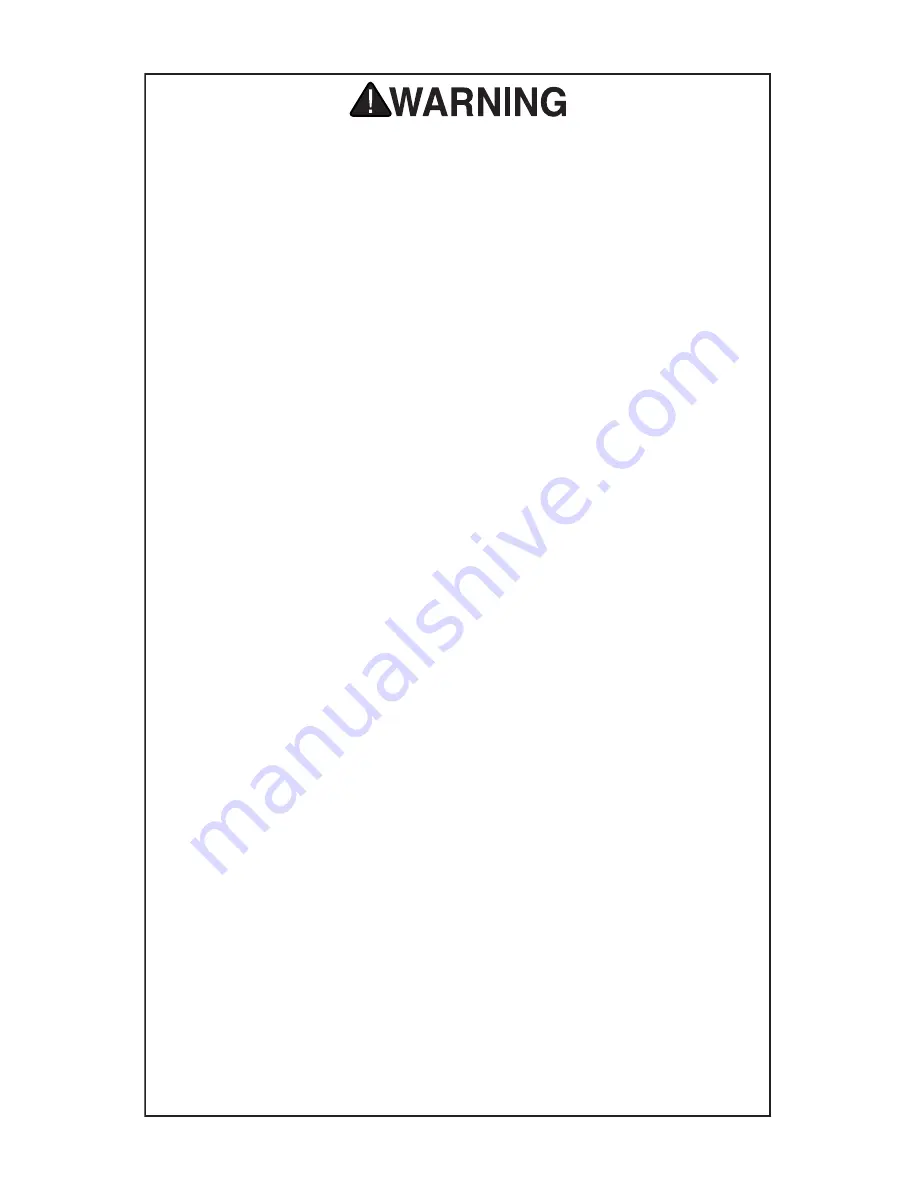
Model T1239 (Mfd. Since 09/17)
-3
-
ELECTRICAL SAFETY. Tool plug must
match outlet. Double-insulated tools have
a polarized plug (one blade is wider than
the other), which must be plugged into a
polarized outlet. Never modify plug. Do
not use adapter for grounded tools. Use
a ground fault circuit interrupter if opera-
tion is unavoidable in damp locations.
Avoid touching grounded surfaces when
operating tool.
WEARING PROPER APPAREL. Do not
wear clothing, apparel or jewelry that
can become entangled in moving parts.
Always tie back or cover long hair. Wear
non-slip footwear to avoid accidental
slips, which could cause loss of workpiece
control. Wear hard hat as needed.
HAZARDOUS DUST. Dust created while
using tools may cause cancer, birth
defects, or long-term respiratory damage.
Be aware of dust hazards associated with
each workpiece material, always wear
a NIOSH-approved respirator, and con-
nect tool to an appropriate dust collection
device to reduce your risk.
HEARING PROTECTION. Always wear
hearing protection when operating or
observing loud machinery. Extended
exposure to this noise without hearing
protection can cause permanent hearing
loss.
REMOVE ADJUSTING TOOLS. Never
leave adjustment tools, chuck keys,
wrenches, etc. in or on tool—especially
near moving parts. Verify removal before
starting!
INTENDED USAGE. Only use tool for its
intended purpose. Never modify or alter
tool for a purpose not intended by the
manufacturer or serious injury or death
may result!
AWKWARD POSITIONS. Keep proper
footing and balance at all times when
operating tool. Do not overreach! Avoid
awkward hand positions that make tool
control difficult or increase the risk of
accidental injury.
SAFE HANDLING. Firmly grip tool. To
avoid accidental firing, do not keep finger
on switch or trigger while carrying.
FORCING TOOLS.. Use right tool for job,
and do not force it. It will do job safer and
better at rate for which it was designed.
SECURING WORKPIECE.
When
required, use clamps or vises to secure
workpiece. This protects hands and frees
both of them to operate tool.
GUARDS & COVERS. Guards and cov-
ers reduce accidental contact with mov-
ing parts or flying debris. Ensure they
are properly installed, undamaged, and
working correctly.
CHILDREN & BYSTANDERS. Keep chil-
dren and bystanders at a safe distance
from the work area. Stop using tool if they
become a distraction.
USE RECOMMENDED ACCESSORIES.
Consult this manual or manufacturer
for recommended accessories. Using
improper accessories will increase risk of
serious injury.
MAINTAIN WITH CARE. Keep cutting
tool edges sharp and clean. Follow all
maintenance instructions and lubrication
schedules to keep tool in good work-
ing condition. A tool that is improperly
maintained could malfunction, leading to
serious personal injury or death. Only
have tool serviced by qualified service-
personnel using matching replacement
parts.
CHECK DAMAGED PARTS. Regularly
inspect tool for any condition that may
affect safe operation. Immediately repair
or replace damaged or mis-adjusted parts
before operating tool.
MAINTAIN POWER CORDS. When dis-
connecting cord-connected tools from
power, grab and pull the plug—NOT the
cord. Carrying or pulling the cord may
damage wires inside. Do not handle cord/
plug with wet hands. Avoid cord damage
by keeping it away from heated surfaces,
high traffic areas, harsh chemicals, sharp
edges, moving parts, and wet/damp loca-
tions. Damaged cords increase risk of
electrocution.
UNATTENDED OPERATION. Never
leave tool running while unattended. Turn
tool
OFF and ensure all moving parts
completely stop before walking away.
EXPERIENCING DIFFICULTIES. If at
any time you experience difficulties per-
forming the intended operation, stop
using the machine! Contact our Technical
Support at (570) 546-9663.
Summary of Contents for T1239
Page 20: ......






































